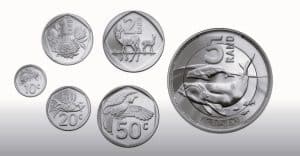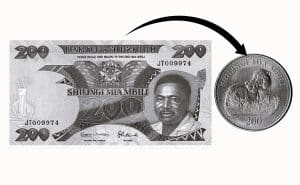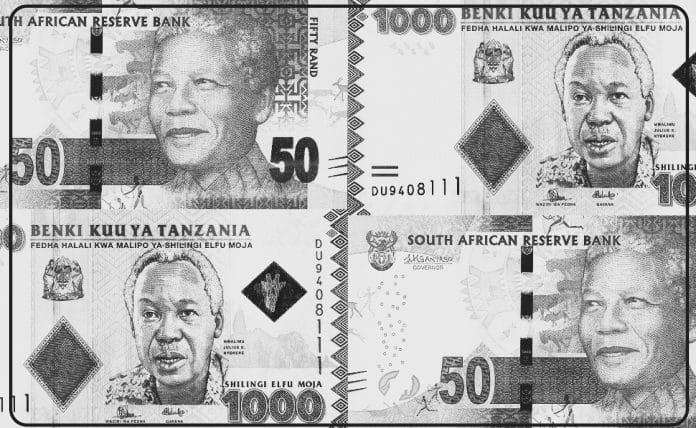A Deep Dive into the Currency Systems of South Africa and Tanzania: What You Need to Know
Are you considering traveling to South Africa or Tanzania? One important aspect to consider before your trip is understanding the currency systems in these two African countries. In this article, we will take a deep dive into the South Africa Tanzania currency systems, providing you with the essential knowledge you need.
South Africa uses the South African Rand (ZAR) as its official currency. We will explore its history, value, and where it can be used. Additionally, we will discuss the availability of ATMs and the best practices for exchanging your currency.
In Tanzania, the official currency is the Tanzanian Shilling (TZS). We will uncover the origins of the shilling, its current value, and where it can be exchanged. Additionally, we will provide guidance on the best places to withdraw cash and how to ensure the security of your money during your stay.
Understanding the South Africa Tanzania currency is crucial to ensure a smooth and hassle-free trip. So, join us as we take a closer look at these fascinating African economies and their currencies.
Overview of the currency system in South Africa
Before we delve into the South Africa Tanzania currency comparison, let’s discuss the overview and historical evolution of each country’s currency.
South Africa, known for its diverse culture and stunning landscapes, is a popular tourist destination. To navigate the country’s currency system, it’s important to understand the South African Rand (ZAR) and how it functions.
History and evolution of the South African currency
The South African Rand has a rich history that dates back to the early 19th century. It was first introduced in 1961, replacing the South African pound. The currency’s name is derived from the term “Witwatersrand,” which refers to the ridge where the Johannesburg gold mines are located.
Over the years, the South African Rand has experienced fluctuations in value due to various economic factors. It has gone through periods of inflation and deflation, influenced by global economic trends, political stability, and domestic economic policies.
Key features and denominations of the South African Rand

The South African Rand is denoted by the symbol “R” and is divided into 100 cents. The currency is available in the following denominations: coins – 5 cents, 10 cents, 20 cents, 50 cents, R1, R2, and R5, and banknotes – R10, R20, R50, R100, and R200.
The banknotes feature prominent South African figures such as Nelson Mandela, Desmond Tutu, and various wildlife species. Each note has unique security features to prevent counterfeiting, making it a secure currency to use during your trip.
Factors influencing the value of the Rand
The value of the South African Rand is influenced by several factors, including commodity prices, interest rates, political stability, and global economic conditions. As a commodity-based currency, fluctuations in the prices of key exports, such as gold and platinum, can impact the value of the Rand.
Investor sentiment and market confidence also play a significant role in determining the value of the currency. Political developments, such as elections or changes in government policy, can affect the Rand’s value in both the short and long term.
Currency exchange and conversion in South Africa
When visiting South Africa, you have various options for currency exchange and conversion. Major international airports, banks, and reputable exchange bureaus offer currency exchange services. It’s advisable to compare rates and fees to ensure you get the best deal.
Using ATMs is a convenient way to access cash in South Africa. ATMs are widely available in cities and towns, and most accept international cards. However, be cautious of using ATMs in remote areas or unfamiliar locations, as there may be a higher risk of card skimming or fraud.
Before your trip, notify your bank about your travel plans to avoid any issues with using your card overseas. Additionally, consider carrying a mix of cash and cards for flexibility and security during your stay in South Africa.
Overview of the currency system in Tanzania
Tanzania, known for its wildlife-rich national parks and beautiful beaches, is a popular destination for nature enthusiasts. Understanding the currency system in Tanzania will help you navigate the country’s financial landscape effectively.
History and evolution of the Tanzanian Shilling

The Tanzanian Shilling has a fascinating history that can be traced back to the German East African Rupee, which was introduced during German colonial rule. After Tanzania gained independence, the currency evolved into the Tanzanian Shilling in 1965.
The Tanzanian Shilling retains its status as the official currency of Tanzania and is widely accepted throughout the country. Over the years, the currency has experienced fluctuations in value due to economic factors such as inflation, government policies, and global market conditions.
Key features and denominations of the Tanzanian Shilling
The Tanzanian Shilling is denoted by the symbol “TZS” and is divided into 100 cents. The currency is available in denominations of coins – 50 cents, 100 cents, 200 cents, and banknotes – 500, 1000, 2000, 5000, and 10,000 shillings.
Banknotes in Tanzania feature prominent figures from the country’s history, including former presidents and national heroes. Each note incorporates security features such as holographic strips and watermarks to prevent counterfeiting.
Factors influencing the value of the Shilling
Similar to other currencies, the value of the Tanzanian Shilling is influenced by various economic factors. Inflation, interest rates, government policies, and global market conditions all play a role in determining the currency’s value.
Tanzania’s economy relies heavily on agriculture, mining, and tourism. Fluctuations in commodity prices, such as coffee, tea, and gold, can impact the value of the Shilling. Additionally, political stability and investor confidence contribute to the currency’s overall value.
Currency exchange and conversion in Tanzania

When visiting Tanzania, it’s important to exchange your currency for Tanzanian Shillings to ensure smooth transactions during your trip. Currency exchange services are available at international airports, banks, and authorized exchange bureaus.
Using ATMs is a convenient way to withdraw cash in Tanzania. ATMs are widely available in major cities and towns, but may be limited in more remote areas. It’s advisable to inform your bank about your travel plans to avoid any issues with using your card abroad.
To ensure the security of your money, it’s recommended to use ATMs located within secure premises, such as banks or reputable establishments. Avoid using ATMs in isolated areas or at night to minimize the risk of theft or fraud.
Comparing the currency systems of South Africa and Tanzania
While South Africa Tanzania currency has unique systems, there are some similarities and differences worth noting.
In terms of denominations, both countries have coins and banknotes of various values. The South African Rand has a wider range of denominations, including R5 and R200 notes, while the Tanzanian Shilling has a higher denomination of 10,000 shillings.
The value of the currencies is influenced by similar factors, such as global economic conditions and political stability. However, the South African Rand is more closely tied to commodity prices due to the country’s significant mining industry.
In terms of availability, ATMs are widely accessible in both countries, although South Africa has a more developed banking infrastructure. Tanzanian ATMs may be limited in remote areas, so it’s important to plan accordingly.
Understanding South Africa Tanzania currency is essential for any traveler visiting these African countries. The South African Rand and Tanzanian Shilling have unique histories, denominations, and factors influencing their value.
When traveling to South Africa or Tanzania, it’s important to familiarize yourself with the currency exchange options and best practices for accessing cash. By being knowledgeable about the local currency, you can ensure a smooth and hassle-free trip, allowing you to fully enjoy the diverse experiences and natural beauty these countries have to offer.
For more articles related to Financial Services in Tanzania, click here!

































